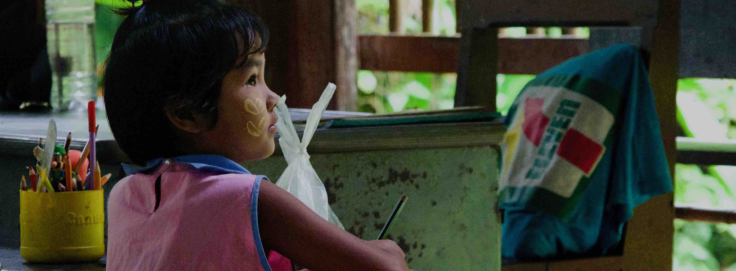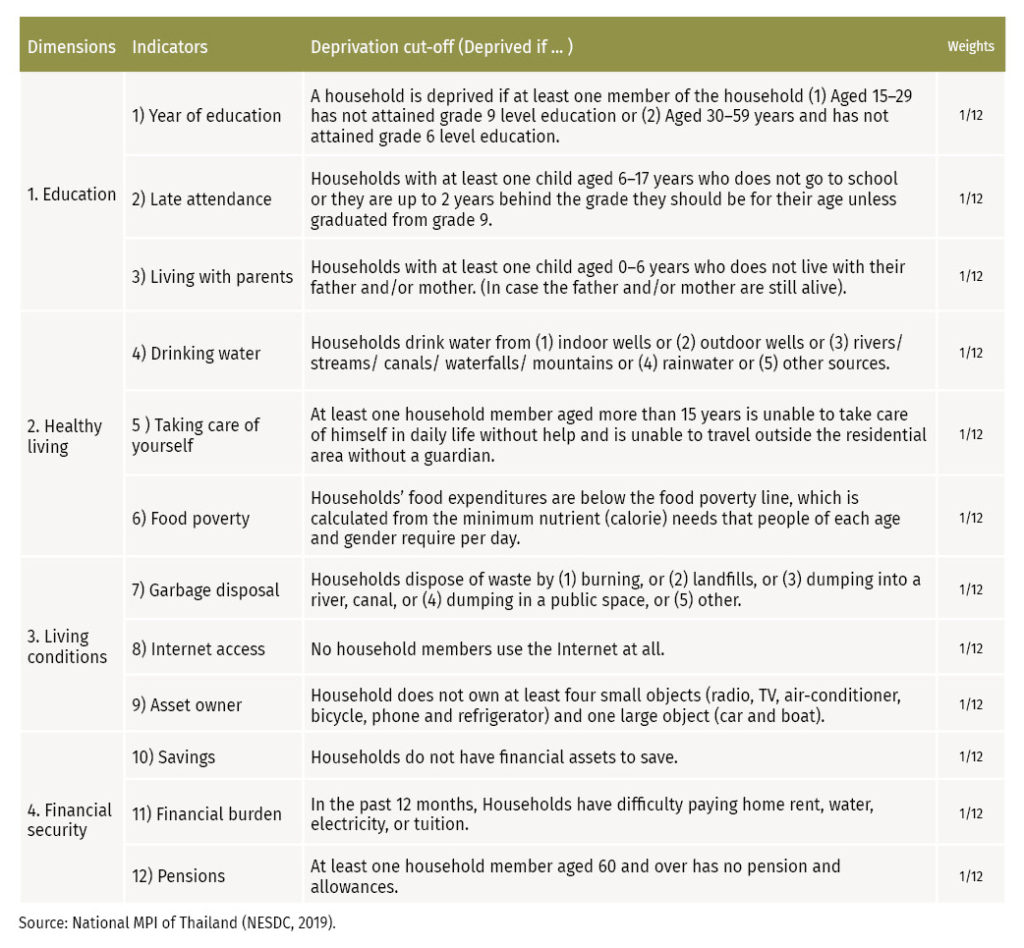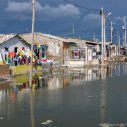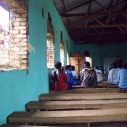
Search
National MPI of Thailand: The compilation process and the policy uses

With the success of constructing the Child MPI in Thailand in 2018, the Office of the National Economic and Social Development Council (NESDC) took another step in 2019 by producing the National Multidimensional Poverty Index (National MPI) as an additional official measure of overall poverty in Thailand. It was also constructed with the purpose of monitoring the progress of SDGs, particularly SDG 1.2.
Involving stakeholders in the construction process of N-MPI
The construction of the National MPI followed a similar path to the process taken to produce the Child MPI in the previous year. The Office of the National Economic and Social Development Council (NESDC) received support from UNICEF Thailand and the Oxford Poverty and Human Development Initiative (OPHI) to produce a National MPI that would be conceptually sound. NESDC also held several focus groups with stakeholders from government agencies and academia to take part in selecting dimensions, indicators, weights and deprivation cut-offs that are suitable for Thailand’s context.
While the Multiple Indicator Cluster Surveys (MICS) data were used to calculate the Child MPI, Household Socio-Economic Surveys (SES) conducted by the National Statistical Office (NSO) were selected as the data source for the National MPI. This is because the household surveys contain rich information on households’ social and economic conditions. Using household surveys also has an advantage of consistency and comparability with the monetary poverty line. The Thailand National MPI consists of four dimensions – namely education, healthy living, living conditions and financial security. Each dimension has equal weight. The poverty cut-off is 26%, which implies that a person is multidimensionally poor if he/she has deprivation equivalent to more than one dimension of the MPI.
National MPI results
In 2017, the Thailand MPI was 0.068 with the headcount ratio of 17.6% or 11.9 million people and the intensity of 38.7%. The MPI had decreased from 0.109 in 2013 and 0.078 in 2015. The dimension that contributed the most to the MPI was the living condition dimension, accounting for 37.2%. In terms of indicators, not having a pension (the universal elderly allowance not included) has the highest contribution at 14.7%, followed by lack of internet and lack of proper garbage disposal.
The dimension that contributed the most to the MPI was the living condition dimension, accounting for 37.2%.
The household size and geography matter to the National MPI. Results show that the value of MPI, along with headcount ratio and intensity of poverty increased with household size in Thailand. In addition, the skip-generation families (where grandparents raise grandchildren) are likely to be MPI poor with a value of 0.132, almost double the national average. In terms of geography, those living in a non-municipal area have a higher MPI than those in municipal areas – both in the incidence and the intensity of poverty.
Similarly, there are also large differences across regions with the Northeast having the highest MPI at 0.102 followed by the South, North, Central and Bangkok at 0.094, 0.074, 0.045 and 0.012 respectively.
Comparing with the Monetary Poverty Line
In 2017, there were 3.42 million people, or 5.06% of the total population, considered to be both MPI poor and monetarily poor. When considered separately, there were 5.32 million (7.87%) monetary poor people while 11.9 million people (17.6%) were MPI poor.
This suggests that there was a big overlap between the two poverty measures with many more people being multidimensionally poor, but not monetarily poor. Accordingly, poverty-reduction policy should shift towards including other dimensions of poverty because reducing deprivations in other dimensions will likely improve monetary poverty as well.
Policy uses
The National MPI has already been incorporated into the annually published Poverty and Inequality Situation of Thailand Report by the NESDC with the intention to update the MPI data every two years (consistent with data availability). Both Child MPI and National MPI have also been used to monitor the progress of SDG 1.2 for Thailand. Not only that, national MPI has been used as empirical evidence to push forward policies in dimensions with high contributions to MPI, such as pension reform and the expansion of the free internet services programme.
This article was published in Dimensions 13

















